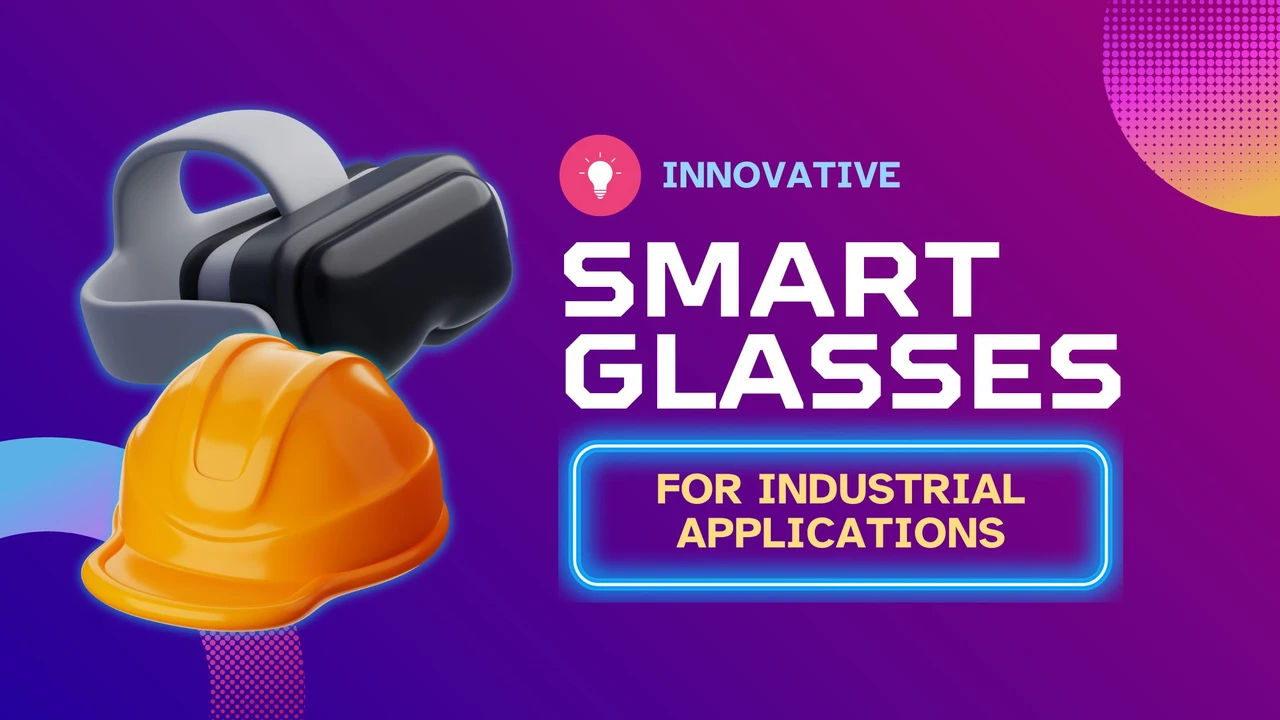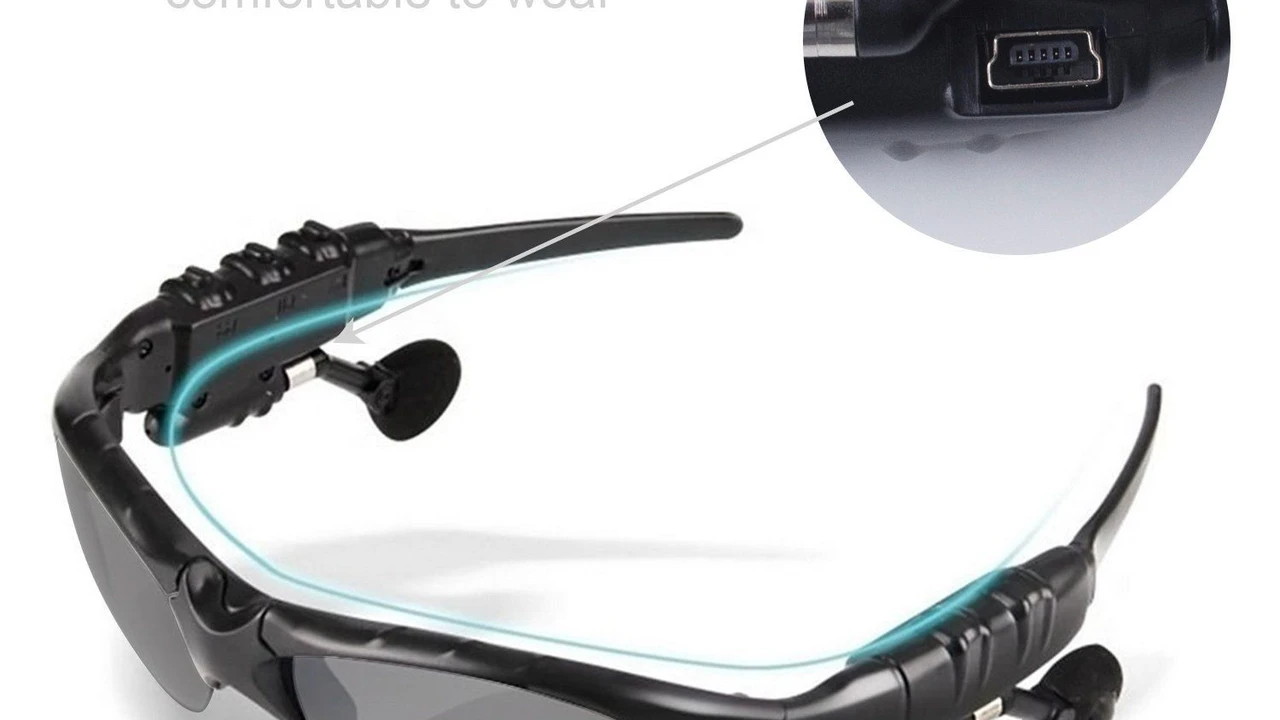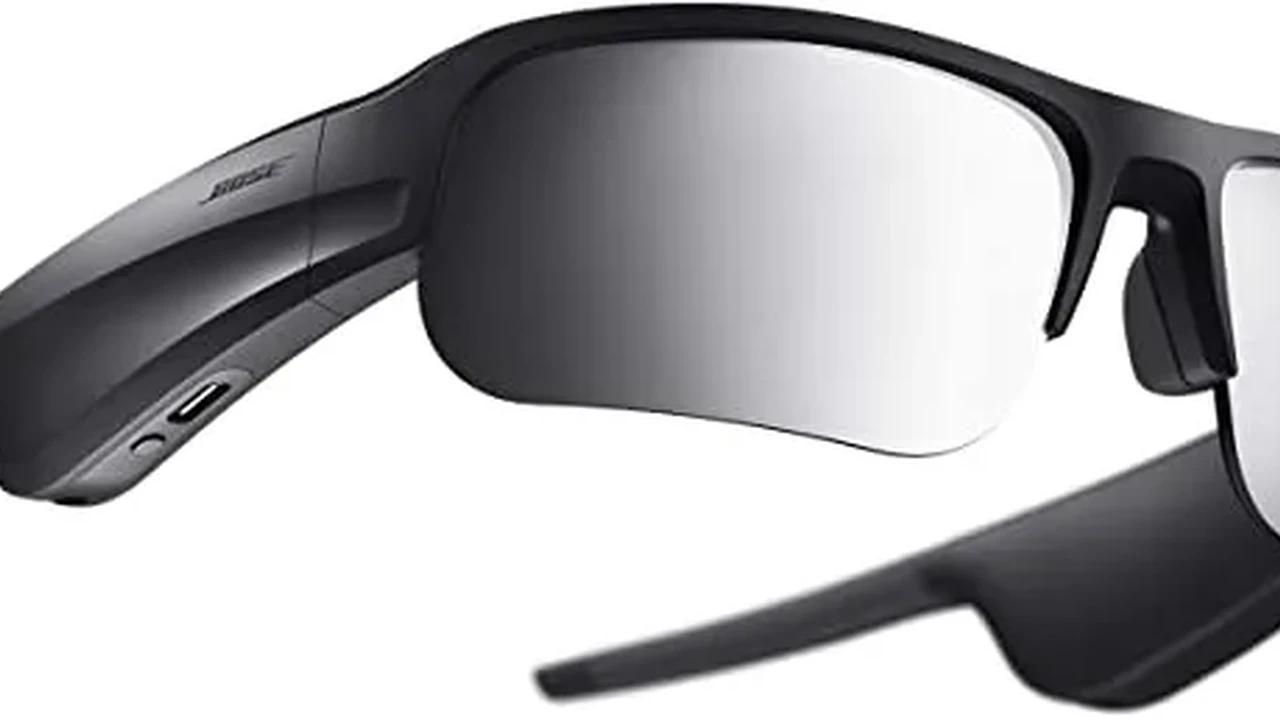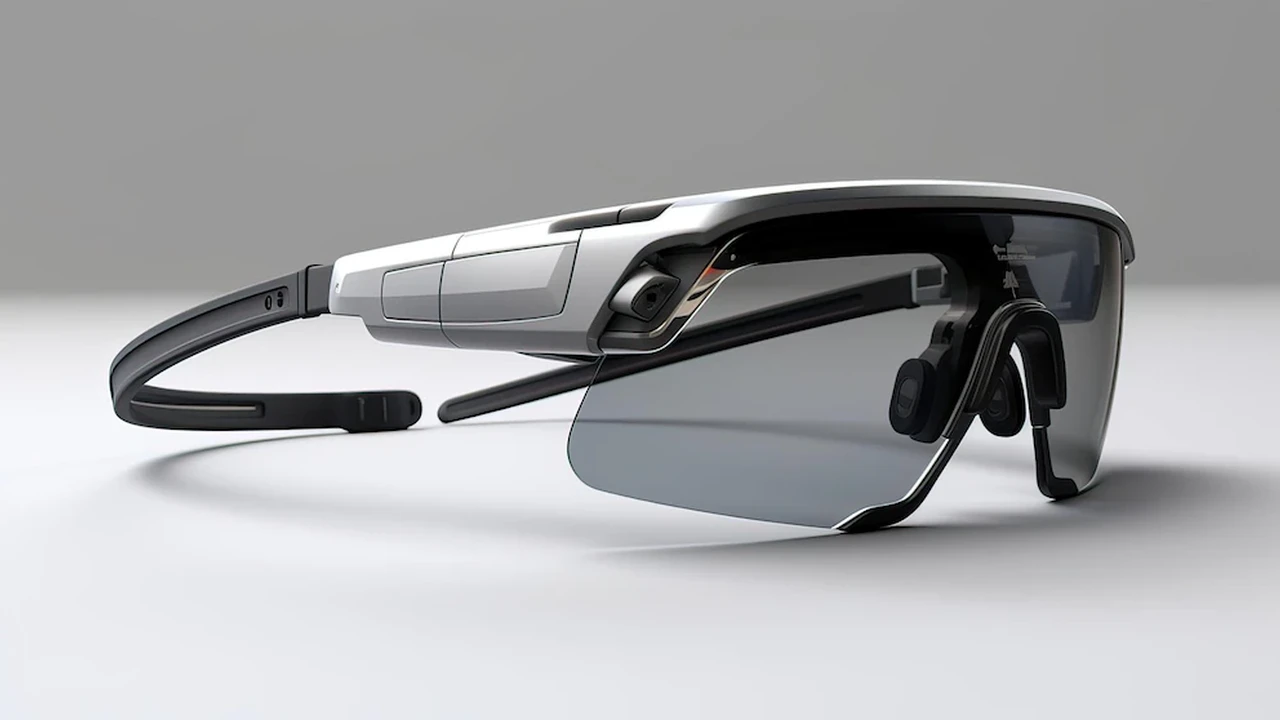Smart Glasses for Art and Design Creative Applications
Unleash creativity with smart glasses in art and design, offering new tools for expression.

Smart Glasses for Art and Design Creative Applications
The world of art and design is constantly evolving, pushing boundaries and embracing new technologies. From traditional canvases to digital tablets, artists and designers have always sought innovative tools to bring their visions to life. Enter smart glasses – a revolutionary piece of wearable technology that is rapidly transforming how creatives conceive, produce, and interact with their work. These devices, once relegated to the realm of science fiction, are now offering unprecedented opportunities for immersive creation, collaborative design, and dynamic presentation. Imagine sketching in thin air, sculpting virtual objects with your hands, or collaborating on a design project with colleagues across continents, all while seeing your environment clearly. This is the promise of smart glasses in the creative industries, and it's a future that's already here.
This article delves deep into the fascinating intersection of smart glasses, art, and design. We'll explore the myriad ways these devices are being utilized, from enhancing traditional artistic practices to enabling entirely new forms of digital art. We'll also highlight specific products that are making waves in the creative community, comparing their features, use cases, and price points to help you understand which might be the best fit for your artistic endeavors. Whether you're a painter, sculptor, graphic designer, architect, or fashion innovator, smart glasses offer a fresh perspective and a powerful new set of tools to expand your creative horizons.
Augmented Reality Art Creation and Digital Sculpting with Smart Glasses
One of the most compelling applications of smart glasses in art and design is their ability to facilitate augmented reality (AR) art creation and digital sculpting. Unlike virtual reality (VR), which completely immerses you in a digital world, AR overlays digital content onto your real-world view. This means artists can create and manipulate digital objects directly within their physical environment, blurring the lines between the tangible and the virtual. Imagine a sculptor using their hands to mold a digital clay model that appears to float in front of them, or a painter adding virtual brushstrokes to a real-world scene. This direct interaction with digital elements in a physical space opens up entirely new possibilities for artistic expression and spatial design.
For digital sculptors, smart glasses offer an intuitive and highly immersive way to work. Instead of being confined to a 2D screen, artists can walk around their digital creations, view them from all angles, and manipulate them with natural hand gestures. This level of spatial awareness and direct interaction can significantly enhance the creative process, allowing for more nuanced and organic forms. Furthermore, AR art can be site-specific, meaning artists can create digital installations that are tied to particular physical locations, offering unique experiences to viewers who visit those spots with their smart glasses.
Recommended Smart Glasses for AR Art and Digital Sculpting
Microsoft HoloLens 2 for Professional AR Art and Design
The Microsoft HoloLens 2 is a leading mixed reality headset that offers unparalleled capabilities for professional AR art and design. While technically a mixed reality device (a more advanced form of AR that allows digital objects to interact with the real world), its applications in creative fields are immense. It features advanced optics, a wide field of view, and precise hand-tracking, allowing for highly intuitive interaction with holographic content. Artists can use HoloLens 2 to sculpt 3D models, create architectural visualizations, or even design interactive art installations that blend seamlessly with the physical environment. Its enterprise-grade capabilities make it suitable for professional studios and educational institutions.
- Key Features: Wide field of view, advanced hand tracking, eye tracking, spatial mapping, enterprise-grade security.
- Use Cases: Professional 3D modeling, architectural visualization, industrial design, interactive art installations, collaborative design reviews.
- Price: Typically in the range of $3,500 - $5,000 USD, depending on the package and region.
Magic Leap 2 for Immersive Creative Experiences
Another powerful contender in the professional AR space is the Magic Leap 2. Designed for enterprise and developer use, it offers a high-fidelity visual experience and robust spatial computing capabilities. Artists and designers can leverage Magic Leap 2 for creating detailed 3D models, developing immersive AR experiences, and prototyping designs in a real-world context. Its focus on comfort and optical quality makes it a strong choice for extended creative sessions.
- Key Features: Dynamic Dimming, larger field of view than its predecessor, improved resolution, powerful processing.
- Use Cases: Advanced AR content creation, medical visualization, industrial training, immersive storytelling, product design.
- Price: Generally starts around $3,299 USD for the developer kit.
Nreal Air for Accessible AR Art Viewing and Light Creation
For those looking for a more accessible entry point into AR art, the Nreal Air smart glasses offer a compelling option. While not as powerful for creation as the HoloLens or Magic Leap, they excel at displaying AR content from connected devices like smartphones or computers. Artists can use Nreal Air to view their 3D models in AR, showcase digital art to clients, or even do light sketching in compatible applications. Their lightweight design and affordability make them ideal for casual use and for experiencing AR art created by others.
- Key Features: Lightweight, portable, connects to smartphones/computers, large virtual screen experience.
- Use Cases: Viewing AR art, personal virtual display for design work, light AR sketching, media consumption.
- Price: Around $379 - $599 USD, depending on the region and retailer.
Collaborative Design and Remote Art Workshops with Smart Glasses
The collaborative potential of smart glasses in art and design is truly transformative. Imagine a team of architects working on a building design, each seeing the same holographic model overlaid on their physical environment, able to point, annotate, and discuss changes in real-time, regardless of their physical location. Or consider a remote art workshop where a master artist can guide students through a painting technique by drawing virtual lines and shapes that appear directly in the students' field of view. Smart glasses facilitate this level of seamless, immersive collaboration, breaking down geographical barriers and enhancing communication.
For design teams, smart glasses can revolutionize review processes. Instead of sharing 2D renders or complex CAD files, designers can present 3D models as holograms, allowing stakeholders to walk around, inspect, and provide feedback on designs as if they were physically present. This can significantly reduce iteration cycles and improve the quality of design outcomes. In educational settings, smart glasses can provide unparalleled opportunities for remote learning, allowing instructors to demonstrate complex techniques or provide personalized feedback in a highly visual and interactive manner.
Smart Glasses for Enhanced Design Collaboration
Vuzix Blade Upgraded for Remote Assistance and Annotation
The Vuzix Blade Upgraded smart glasses are well-suited for collaborative design and remote assistance in creative fields. While often used in industrial settings, their capabilities for displaying information and enabling remote communication make them valuable for designers. Teams can use the Blade Upgraded to share live video feeds, annotate designs in real-time, and receive instructions from remote experts. This is particularly useful for on-site design reviews or for guiding less experienced team members through complex tasks.
- Key Features: See-through waveguide optics, integrated camera, voice control, remote assistance capabilities.
- Use Cases: Remote design review, on-site architectural visualization, guided art restoration, collaborative prototyping.
- Price: Approximately $799 - $999 USD.
Google Glass Enterprise Edition 2 for Hands-Free Collaboration
The Google Glass Enterprise Edition 2, while primarily aimed at industrial applications, offers features that can be adapted for collaborative design. Its lightweight, hands-free design allows users to access information, capture photos/videos, and communicate with remote colleagues without interrupting their workflow. For artists working on large-scale installations or designers needing to reference plans while physically manipulating materials, Glass EE2 can provide a convenient way to stay connected and informed.
- Key Features: Lightweight design, integrated camera, voice commands, enterprise-focused software.
- Use Cases: Hands-free access to design specifications, remote expert consultation for art projects, quality control in creative production.
- Price: Typically sold through enterprise partners, price varies but often in the $999 - $1,500 USD range.
Immersive Art Exhibitions and Interactive Installations with Smart Glasses
Smart glasses are not just tools for creation; they are also powerful mediums for experiencing art. The ability to overlay digital content onto the real world opens up exciting possibilities for immersive art exhibitions and interactive installations. Imagine walking through a gallery where static paintings come to life with animated elements, or where sculptures reveal hidden narratives when viewed through smart glasses. This adds a new layer of engagement for the audience, transforming passive viewing into an active, personalized experience.
Artists can design entire exhibitions that are only fully realized when viewed through smart glasses, creating a unique blend of physical and digital art. This can include augmented reality tours, where historical sites or public spaces are enhanced with digital information, historical reconstructions, or artistic interpretations. Interactive installations can respond to the viewer's movements or gaze, creating a dynamic and evolving artwork. This new frontier in art presentation allows for greater storytelling, deeper engagement, and a truly memorable experience for the audience.
Smart Glasses for Experiencing Immersive Art
Epson Moverio BT-40S for High-Quality AR Art Viewing
The Epson Moverio BT-40S smart glasses are designed for high-quality AR content viewing, making them excellent for immersive art exhibitions. They offer a comfortable fit and a clear, bright display, ensuring that digital art overlays are crisp and vibrant. Museums and galleries can deploy these glasses to provide enhanced visitor experiences, offering interactive guides, animated historical contexts, or digital extensions of physical artworks.
- Key Features: Si-OLED display, comfortable design, high resolution, USB-C connectivity.
- Use Cases: Museum tours, art gallery enhancements, historical site overlays, interactive educational content.
- Price: Around $579 - $719 USD.
Rokid Air for Personal Immersive Art Experiences
The Rokid Air smart glasses, similar to Nreal Air, offer a more personal and accessible way to experience immersive art. While they connect to smartphones, they provide a large virtual screen that can be used to display AR art applications or 3D models. Artists can create AR experiences that viewers can access on their own Rokid Air glasses, allowing for a wider distribution of their digital art. This is particularly useful for digital artists who want to showcase their work beyond traditional gallery spaces.
- Key Features: Lightweight, portable, large virtual screen, connects to various devices.
- Use Cases: Personal AR art viewing, mobile art installations, digital art showcases, immersive storytelling.
- Price: Approximately $499 - $599 USD.
Fashion Design and Wearable Art with Smart Glasses
The fashion industry is always at the forefront of innovation, and smart glasses are no exception. These devices are not only becoming fashion accessories themselves but are also being used as tools for fashion design and the creation of wearable art. Designers can use smart glasses to visualize garments in 3D, overlay virtual fabrics onto physical mannequins, or even conduct virtual fashion shows where models wear digitally rendered clothing. This allows for rapid prototyping, material experimentation, and a more sustainable design process by reducing the need for physical samples.
Beyond practical design applications, smart glasses are inspiring a new wave of wearable art. Artists are integrating smart glass technology into their creations, blurring the lines between fashion, technology, and performance art. This can include garments that change patterns based on environmental data, accessories that display interactive visuals, or even entire outfits that become part of an augmented reality narrative. The potential for personalized, dynamic, and interactive fashion is immense, pushing the boundaries of what clothing can be.
Smart Glasses for Fashion Innovation and Wearable Art
Ray-Ban Stories for Fashion-Forward Wearable Tech
While not traditional AR glasses, Ray-Ban Stories (developed with Meta) represent a significant step in making smart glasses a mainstream fashion accessory. These glasses integrate cameras and speakers discreetly into classic Ray-Ban frames, allowing users to capture photos and videos, listen to music, and make calls hands-free. For fashion designers, they offer a glimpse into how wearable technology can seamlessly blend with style. Artists can also use them to capture unique perspectives for their creative projects or to document the creation process from a first-person view.
- Key Features: Integrated cameras, open-ear audio, classic Ray-Ban design, Facebook Assistant integration.
- Use Cases: Fashion documentation, street style photography, capturing creative inspiration, personal wearable art.
- Price: Starts around $299 USD.
Huawei X Gentle Monster Eyewear II for Stylish Audio Integration
The Huawei X Gentle Monster Eyewear II focuses on integrating audio technology into stylish eyewear. These glasses feature open-ear speakers and touch controls, offering a discreet way to listen to music or take calls. While they don't have a visual display, their emphasis on fashion and integrated tech makes them relevant for wearable art and fashion design. Designers can explore how audio elements can be incorporated into their creations, or use these glasses as a base for more elaborate wearable tech projects.
- Key Features: Open-ear stereo speakers, touch controls, stylish design, long battery life.
- Use Cases: Fashion accessory, audio-integrated wearable art, discreet communication for designers on the go.
- Price: Varies by region, typically around $300 - $400 USD.
Architectural Visualization and Interior Design with Smart Glasses
For architects and interior designers, smart glasses are proving to be invaluable tools for visualization, client presentations, and on-site planning. The ability to overlay 3D architectural models onto a real-world construction site or an empty room allows designers to experience their creations in context before they are built. This can help identify potential issues early in the design process, make more informed decisions, and present designs to clients in a far more engaging and understandable way than traditional blueprints or 2D renders.
Imagine an architect walking through a proposed building site, seeing the future structure as a transparent overlay, checking sightlines, and assessing spatial relationships. Or an interior designer presenting different furniture layouts and material finishes to a client, who can see the changes instantly appear in their own living room. This level of immersive visualization enhances communication between designers and clients, reduces misunderstandings, and ultimately leads to better design outcomes. Smart glasses also facilitate on-site collaboration, allowing teams to review plans and make adjustments directly in the physical space.
Smart Glasses for Architectural and Interior Design
Lenovo ThinkReality A3 for Enterprise-Grade Visualization
The Lenovo ThinkReality A3 is a powerful smart glasses solution designed for enterprise use, making it highly suitable for architectural visualization and interior design. It offers a high-resolution display and can be tethered to a PC or select Motorola smartphones, providing robust computing power for complex 3D models. Architects can use the A3 to view detailed BIM models, conduct virtual walk-throughs of proposed buildings, and collaborate with colleagues on design iterations in a shared AR space.
- Key Features: High-resolution stereoscopic displays, multiple cameras for spatial tracking, tethered computing for powerful applications.
- Use Cases: Architectural walkthroughs, BIM model review, interior design visualization, construction site planning, client presentations.
- Price: Enterprise pricing, typically requires a quote, but generally in the $1,500 - $2,500 USD range.
Varjo XR-3 for Ultra-High Fidelity Mixed Reality
While at the very high end of the spectrum, the Varjo XR-3 offers unparalleled visual fidelity for mixed reality applications, making it ideal for architectural firms and design studios that demand the absolute best. Its human-eye resolution display allows for incredibly realistic visualization of architectural models, materials, and lighting. This level of detail is crucial for making critical design decisions and for creating highly convincing client presentations. The XR-3 is a professional-grade tool for the most demanding visualization tasks.
- Key Features: Human-eye resolution, video pass-through mixed reality, integrated eye tracking, foveated rendering.
- Use Cases: High-fidelity architectural visualization, photorealistic interior design, complex urban planning, virtual prototyping.
- Price: Premium enterprise pricing, often exceeding $6,000 - $10,000 USD, plus annual software licenses.
Graphic Design and Digital Art Enhancement with Smart Glasses
Even for graphic designers and digital artists who primarily work on 2D screens, smart glasses offer unique enhancements to their workflow. While not replacing traditional monitors, smart glasses can provide an expanded workspace, allowing designers to view multiple virtual screens simultaneously, or to project their artwork onto a large virtual canvas in their physical environment. This can be particularly useful for reviewing layouts, comparing different design iterations, or simply having reference materials readily available in their field of view without cluttering their physical desk.
For digital painters and illustrators, smart glasses can offer a new perspective on their work. They can view their digital canvases as if they were physical paintings, stepping back to assess composition and flow. Some smart glasses can also integrate with digital pens or hand gestures, allowing for more intuitive interaction with design software. While still an emerging area, the potential for smart glasses to provide a more immersive and flexible digital workspace for graphic designers is significant.
Smart Glasses for Graphic Design and Digital Art Workflow
XREAL Air 2 Pro for Virtual Monitor Expansion
The XREAL Air 2 Pro (formerly Nreal Air 2 Pro) is an excellent choice for graphic designers looking to expand their digital workspace. These glasses function as a portable virtual monitor, allowing users to project a large, high-resolution screen directly into their field of view. This means designers can have multiple virtual displays for their design software, reference images, and communication tools, all without needing physical monitors. It's a game-changer for working remotely or in compact spaces, providing a flexible and expansive digital canvas.
- Key Features: Micro-OLED display, high resolution, adjustable electrochromic dimming, connects to various devices via USB-C.
- Use Cases: Portable multi-monitor setup for graphic design, reviewing digital art on a large virtual screen, mobile design work.
- Price: Around $449 - $499 USD.
TCL RayNeo X2 for Integrated AI and Display
The TCL RayNeo X2 smart glasses offer a blend of display capabilities and integrated AI, which could be beneficial for graphic designers. While still in early stages of availability, their potential for displaying notifications, providing real-time translation, and offering navigation could free up screen space on a primary monitor. For designers who need quick access to information or want to stay connected without constantly looking at their phone, the RayNeo X2 offers a glimpse into a more integrated digital workflow.
- Key Features: Micro-LED optical waveguide display, integrated camera, AI capabilities, real-time translation.
- Use Cases: Quick reference display for design elements, hands-free communication during design sessions, ambient information display.
- Price: Expected to be in the mid-range, specific pricing not widely available yet.
Challenges and Future Outlook for Smart Glasses in Creative Fields
While the potential of smart glasses in art and design is immense, there are still challenges to overcome. The cost of high-end professional devices can be prohibitive for individual artists or smaller studios. Battery life remains a concern for extended creative sessions, and the comfort and weight of some devices still need improvement for all-day wear. Software development for creative applications on smart glasses is also still in its nascent stages, though rapidly evolving. Furthermore, the learning curve for new interfaces and interaction methods can be steep for some users.
Despite these challenges, the future of smart glasses in creative fields looks incredibly bright. As the technology matures, we can expect more affordable, lighter, and more powerful devices. Advances in display technology, spatial computing, and AI will unlock even more sophisticated creative tools. We'll likely see more intuitive gesture controls, seamless integration with existing design software, and a wider array of purpose-built applications for artists and designers. The convergence of smart glasses with other emerging technologies like haptic feedback and brain-computer interfaces could lead to entirely new forms of artistic expression that we can barely imagine today.
Smart glasses are not just gadgets; they are becoming extensions of our creative minds, offering new ways to perceive, interact with, and shape the world around us. For artists and designers, this means an expanded canvas, a richer palette of tools, and an unprecedented ability to bring their most ambitious visions to life. The creative revolution powered by smart glasses has only just begun, and it promises to redefine the boundaries of art and design for generations to come. So, if you're a creative professional looking to stay ahead of the curve, now is the time to explore how smart glasses can transform your artistic practice and open up new avenues for innovation.
:max_bytes(150000):strip_icc()/277019-baked-pork-chops-with-cream-of-mushroom-soup-DDMFS-beauty-4x3-BG-7505-5762b731cf30447d9cbbbbbf387beafa.jpg)






